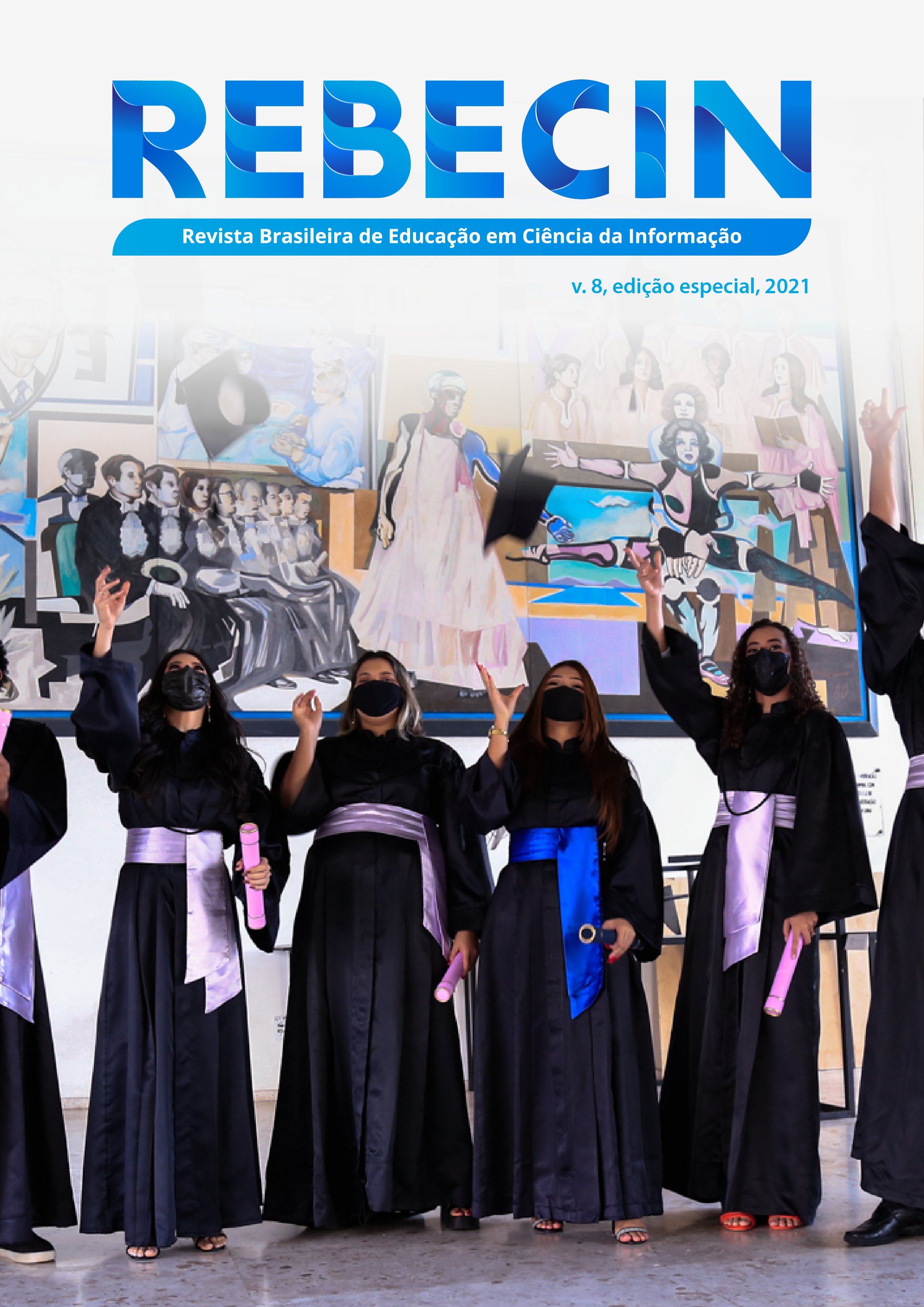Scientific network of the Graduate Program in Biological Sciences
Biochemistry at the Federal University of Rio Grande do Sul
DOI:
https://doi.org/10.24208/rebecin.v8i.257Keywords:
Bibliometrics; Co-authorship; Network; Biochemistry; UFRGS.Abstract
This article aims to identify the scientific network of professors/researchers at the Graduate Program in Biological Sciences: Biochemistry (GPSBiochemistry), from the Universidade Federal do Rio Grande do Sul (UFRGS), in the period 2007-2016. Applies bibliometrics indicators of scientific production (number of documents published in journals) and co-authorship. The data collection of the scientific production of the 48 professors from GPSBiochemistry/UFRGS took place at Coleta Capes and at the Sucupira Platform, belonging to the Coordenação de Aperfeiçoamento de Pessoal de Nível Superior (CAPES), followed by the verification of whether this production was indexed in the Web of Science. In order to treat and normalize the names of the institutions in which the researchers declared their affiliation, a controlled vocabulary of authorities was created in the Thesa tool. The networks were created using the VosViewer software. GPSBiochemistry/UFRGS has a wide scientific network of collaboration in the published documents, and the most frequent interactions, in all periods analyzed, were with researchers affiliated with departments of the university itself (UFRGS) and with institutions located in the southern region of the country. Due to the lack of standardization of the names of the researchers' affiliation institutions, this article proposes a standardization protocol for the institutional name for the GPSBiochemistry/UFRGS context, which can be used by managers in the definition of an internal policy for submission of manuscripts per professor. In addition, the controlled vocabulary of authorities "Institutions of Biochemistry", created for the development of this research, may be used in other studies.
Downloads
References
AITCHISON, J.; GILCHRIST, A.; BAWDEN, D. Thesaurus construction and use: a practical manual. London: Taylor & Francis e-Library, 2005.
BUFREM, L. S.; COSTA, F. D. O.; GABRIEL JUNIOR, R. F.; PINTO, J. S. P. Modelizando práticas para a socialização de informações: a construção de saberes no ensino superior. Perspectivas em Ciência da Informação, v. 15, n. 2, 2010.
GABRIEL JUNIOR, R. F.; LAIPELT, R. C. Thesa: ferramenta para construção de tesauro semântico aplicado interoperável. Revista P2P & Inovação, Rio de Janeiro, v. 3, n. 2, p.124-145, mar./set. 2017.
GHENO, E. M. et al. Impacto da internacionalização na visibilidade da produção científica do Programa de Pós-Graduação em Ciências Biológicas: Bioquímica/UFRGS (2007-2016). Encontros Bibli, v. 25, p. 1-25, 2020.
GHENO, E. M. Relações entre produtividade e colaboração no Programa de Pós-Graduação em Ciências Biológicas, Bioquímica/UFRGS (2007-2016). Trabalho de Conclusão de Curso (Bacharelado em Biblioteconomia) – Universidade Federal do Rio Grande do Sul, Porto Alegre, 2019.
HAYASHI, M. C. P. I.; HAYASHI, C. R. M.; LIMA, M. Y. Análise de redes de co-autoria de artigos científicos em educação especial. Liinc em revista, v. 4, n. 1, 2008.
LUUKKONEN, T.; PERSSON, O.; SILVERTSEN, G. Understanding patterns of international scientific collaboration. Science, Technology & Human Values, v. 17, n.1, p. 101-126, 1992.
MOLINA, J. L. El estúdio de las redes personales: contribuciones, métodos y perspectivas. Empiria, v.10, p.71-106, jul./dec.2005.
MOURA, A. M. M. Motivação para a pesquisa, determinação de parcerias e divisão da coautoria e coinvenção: principais critérios utilizados pelos pesquisadores da área da biotecnologia. Em Questão, v. 18, n. 3, p. 29-45, 2012.
WELLMAN, B. An electronic group is virtually a social network. In: KIESLER, S. Culture of the Internet. Hillsdale, NJ: Lawrence Erlbaum, 179-205, 1997.
Published
How to Cite
Issue
Section
License
A REBECIN adota a licença Creative Commons CC-BY 4.0 (https://creativecommons.org/licenses/by/4.0/deed.pt_BR) , a qual permite:
- Compartilhar— copiar e redistribuir o material em qualquer suporte ou formato
- Adaptar— remixar, transformar, e criar a partir do material para qualquer fim, mesmo que comercial.
A REBECIN considera que o autor detém o direito autoral sobre sua produção, porém o autor deve concordar em ceder à revista o direito à primeira publicação. Além disso, o autor deve concordar que:
- em quaisquer publicações em repositórios institucionais, capítulos de livro ou outras produções decorrentes de trabalhos publicados na REBECIN, devem ser dados os devidos créditos à publicação inicial.
- estão autorizados a publicar e distribuir seu trabalho online (ex.: em repositórios institucionais ou na sua página pessoal) a qualquer momento antes ou durante o processo editorial, já que isso pode gerar alterações produtivas, bem como aumentar o impacto e a citação do trabalho publicado pela REBECIN.









 Licenciada por
Licenciada por 